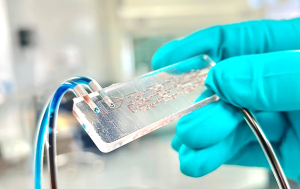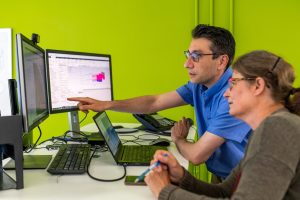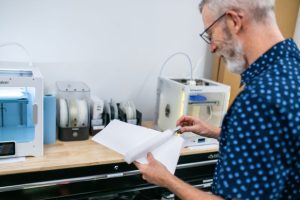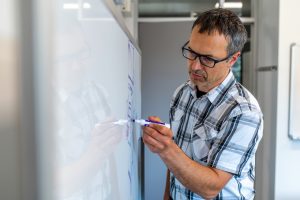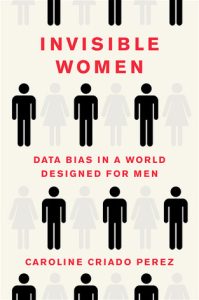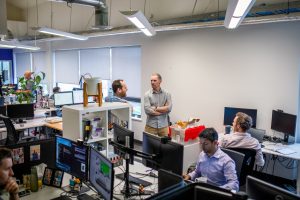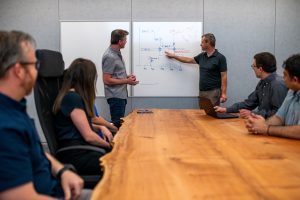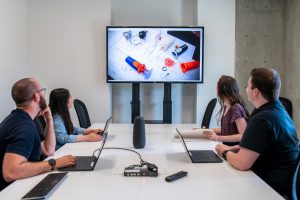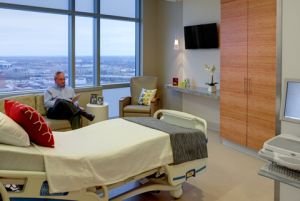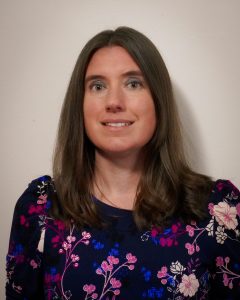 International Women’s Day (IWD) is that time of year when we celebrate the achievements of women all around the world, from political leaders and social activists to business visionaries and MedTech pioneers.
International Women’s Day (IWD) is that time of year when we celebrate the achievements of women all around the world, from political leaders and social activists to business visionaries and MedTech pioneers.
For me, as an executive woman in MedTech, IWD is a wonderful opportunity to recognize the women in my field who drive innovation and elevate and advance gender parity in technology – women, like Dr. Stephanie Willerth.
I first met Dr. Willerth in 2020 over Zoom and quickly connected over growing up in the Mid-West and our mutual love for the Kansas City Chiefs. While fully aware of Dr. Willerth’s expertise and professional achievements, I realized I knew very little about her background and her journey as a woman in a male-dominated field.
So, after exchanging congratulatory texts following the Chief’s Super Bowl win, I invited her to talk to me about her career and share her perspective on women in STEM.
A pioneer in the world of stem cell research, Dr. Willerth is a Full Professor and Canada Research Chair at the University of Victoria and Co-founder/CEO of Axolotl Biosciences, a company that specializes in multiple bioprinting platforms that address a wide range of research applications such as neural and cardiac diseases.
Dr. Willerth grew up in Missouri, primarily in an agricultural town, during the 80’s and 90’s and began showing an interest in science at an early age. “When I was five, I asked my parents for a chemistry set for Christmas” said Dr. Willerth. “My parents thought, OK, that’s our daughter’s thing, but that’s also weird for a five year old.” But it didn’t stop there.
In the ninth grade, Dr. Willerth entered her first science fair with some classmates and learned that they could apply for a grant to fund their project. “We were awarded $50.00, which was a lot of money back then, and I remember thinking that I could use the money to buy video games” Instead, young Dr. Willerth used the money to order sea plankton and analyzed their behavior in response to treating them with different concentrations of sugar. “We won first prize!” said Dr Willerth, adding “it’s a classic story now that I am a grownup with my own lab.”
It is probably no surprise that Dr. Willerth followed her early success in science fair projects with an extended essay in her senior year of high school on stem cells. She then went to MIT, where she graduated with two bachelor’s degrees in Chemical Engineering and Biology.
She combined her passion for science and engineering by pursuing her Master’s and PhD in Biomedical/Medical Engineering at Washington University in St. Louis. She then earned a Post-Doctoral Fellowship from UC Berkeley before landing her prestigious position at the University of Victoria and founding Axolotl.
Dr. Willerth formed Axolotl in 2020 after attending a conference where she saw new bioprinters and realized they would be useful to automate her lab processes. “When I made tissue models in grad school, it was all by hand” said Dr. Willerth. The company demonstrating the new technology, called Aspect Biosystems, had developed the bioprinter but still needed someone with materials expertise.
This was the start of a collaboration with Dr. Willerth. “We realized that if this approach worked, we could make our neural tissues using a 3D printer and scale more quickly” said Willerth, “we also figured out how to support the growth and survival of the cells to make high quality bio ink for printing human stem cells.”
This was the beginning of Axolotl and the project that led the team to commercialize the bioink. Currently, Axolotl has 8 employees and will be moving from the University of Victoria campus soon.
Today, Dr Willerth says that she is most excited about bioprinting the Alzheimer’s tissues models, however their Bio Ink works well for a variety of different tissue types, so they rebranded it as TissuePrint. Following positive feedback on a publication about their patent-pending microsphere and Biobank technology, they decided it made sense to pursue other products including BrainPrint and HeartPrint.
“Maintaining the balance between my work as a professor, running a full-time lab, and being the CEO of a start-up was not something I dreamed about growing up. I just never thought I would start a company” said Dr. Willerth. Despite her childhood plans, Dr. Willerth has fully embraced her role as a CEO and regularly finds herself pitching the company to investors, questioning the commercial viability of new product ideas, and making strategic decisions for the company’s future growth. “I enjoy running the company more than I ever thought I would.”
When asked about gender equity today, Dr. Willerth said, “before we offered biomedical engineering at the University of Victoria, mechanical, electrical, and computer engineering were the only options available, and a lot of women students were leaving engineering and transferring to physics or one of the other sciences. Once we added the Biomedical engineering program however, women began sticking around because it interested them. Today in our biomedical engineering program we are at gender parity, and my lab is also at gender parity – but there’s still a long way to go in the field.”
It is often said that the biggest predictor of someone becoming an engineer is if they have a relative who’s an engineer. Whether or not that’s true, the idea of seeing someone you identify with doing something you thought was beyond your reach is very powerful.
The more women STEM students see other women succeeding in STEM professions, the more likely they are to stay in the field. And it helps if they’re working on something that inspires them “I think women are interested in my program because they can see a direct connection between working on exciting research and technology and improving people’s health.” said Dr Willerth. “Seeing the potential of your work and knowing you can have an impact on people’s lives is very appealing – especially when you see another woman leading the charge.”
Dr. Stephanie Willerth is the founder and CEO of Axolotl Biosciences, and a Full Professor of Biomedical Engineering at the University of Victoria. She is the author of, Engineering Neural Tissue From Stem Cells published by Academic Press.
Image: Stephanie Willerth
Lynne Lowry is Senior Vice President of Business Development at StarFish Medical. Lynne is a seasoned Business Development Executive in the medical diagnostic industry. She has held multiple roles in the diagnostic, life science and medical device space in her 30 year career.
- SEO Powered Content & PR Distribution. Get Amplified Today.
- Platoblockchain. Web3 Metaverse Intelligence. Knowledge Amplified. Access Here.
- Source: https://starfishmedical.com/blog/women-stem-stephanie-willerth/
- :is
- $UP
- 2020
- 3d
- 8
- a
- About
- academic
- achievements
- activists
- added
- address
- advance
- After
- Agricultural
- All
- Alzheimer’s
- and
- Another
- appealing
- applications
- Apply
- approach
- ARE
- around
- AS
- aspect
- At
- attending
- author
- automate
- available
- awarded
- back
- background
- Balance
- BE
- because
- becoming
- before
- began
- Beginning
- being
- Berkeley
- between
- Beyond
- Biggest
- biology
- biomedical
- business
- business development
- buy
- by
- called
- Campus
- CAN
- Canada
- Career
- celebrate
- Cells
- ceo
- Chair
- charge
- chemical
- chemistry
- City
- classic
- collaboration
- COM
- combined
- commercial
- company
- Company’s
- computer
- Computer Engineering
- Conference
- connected
- connection
- could
- Currently
- day
- decided
- decisions
- demonstrating
- Despite
- developed
- Development
- device
- different
- direct
- diseases
- doing
- drive
- during
- Early
- earned
- ELEVATE
- employees
- engineer
- Engineering
- enjoy
- entered
- equity
- especially
- ESSAY
- EVER
- exchanging
- excited
- exciting
- executive
- expertise
- fair
- feedback
- field
- figured
- finds
- First
- followed
- following
- For
- formed
- founder
- Founder and CEO
- founding
- from
- full
- fully
- fund
- future
- future growth
- Gender
- Go
- grade
- grant
- Growing
- Growth
- Have
- Health
- Held
- helps
- High
- How
- How To
- However
- HTTPS
- human
- i
- idea
- ideas
- identify
- Impact
- improving
- in
- Including
- industry
- Innovation
- instead
- interest
- interested
- International
- Investors
- IT
- journey
- jpg
- Kansas
- Kansas City
- Knowing
- lab
- landing
- leaders
- leading
- learned
- leaving
- Led
- Life
- Life Science
- like
- likely
- little
- Lives
- Long
- Lot
- Louis
- love
- made
- make
- Making
- male-dominated
- master’s
- materials
- max-width
- mechanical
- medical
- medical device
- Medtech
- MIT
- models
- money
- more
- most
- moving
- multiple
- mutual
- needed
- Neural
- New
- new product
- of
- offered
- Old
- on
- ONE
- Opportunity
- Options
- order
- Other
- own
- parents
- parity
- passion
- people’s
- perspective
- Physics
- pioneer
- pioneers
- pitching
- plans
- Platforms
- plato
- Plato Data Intelligence
- PlatoData
- political
- position
- positive
- potential
- powerful
- Predictor
- president
- press
- prestigious
- primarily
- probably
- processes
- Product
- Products
- professional
- Professor
- Program
- project
- projects
- Publication
- published
- quality
- quickly
- range
- reach
- realized
- recognize
- regularly
- remember
- research
- response
- Role
- roles
- running
- Said
- says
- Scale
- School
- Science
- SCIENCES
- SEA
- seasoned
- seeing
- senior
- sense
- set
- Share
- Simple
- So
- Social
- some
- Someone
- something
- Soon
- Space
- specializes
- start
- Start-up
- stay
- Stem
- stem cells
- sticking
- Still
- Stop
- Story
- Strategic
- Students
- success
- such
- Super
- Super Bowl
- support
- surprise
- survival
- Talk
- team
- Technology
- that
- The
- the world
- their
- Them
- thing
- Think
- Thinking
- thought
- time
- tissues
- to
- today
- Transferring
- treating
- true
- types
- university
- use
- variety
- viability
- Vice President
- Victoria
- Video
- visionaries
- washington
- Way..
- WELL
- whether
- which
- while
- WHO
- wide
- Wide range
- will
- win
- with
- woman
- Women
- Won
- wonderful
- Work
- worked
- working
- works
- world
- would
- year
- young
- Your
- zephyrnet
- zoom




